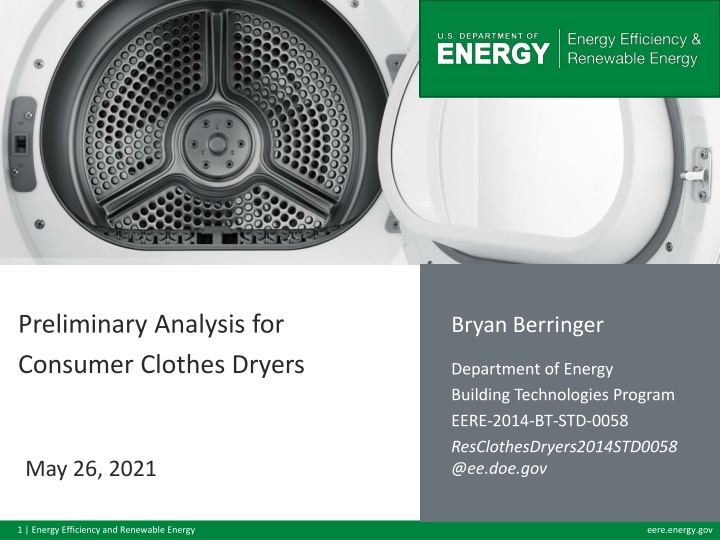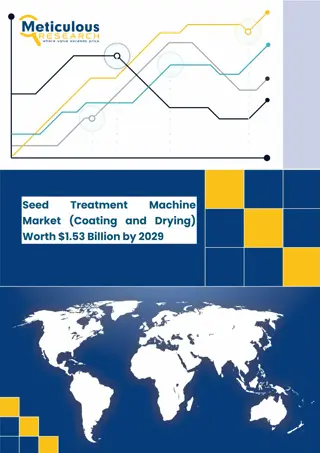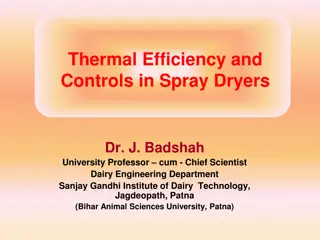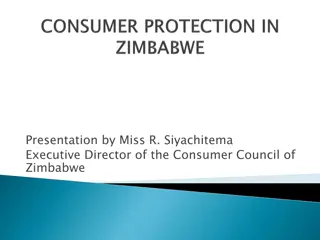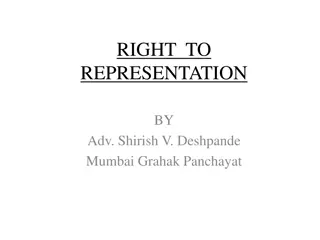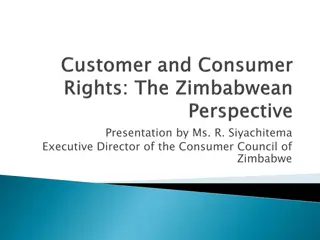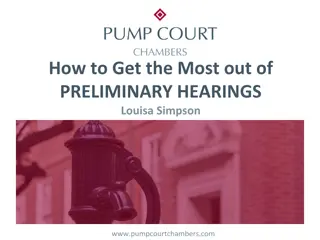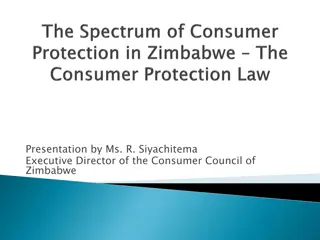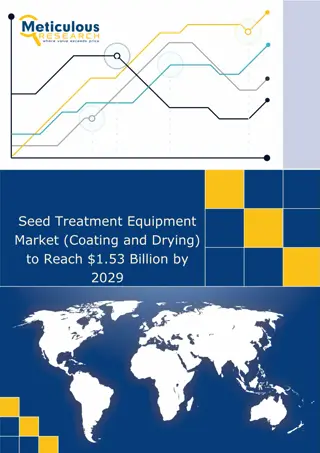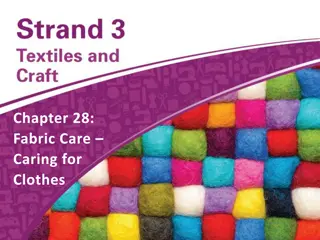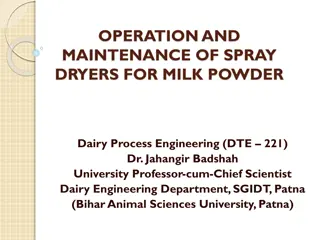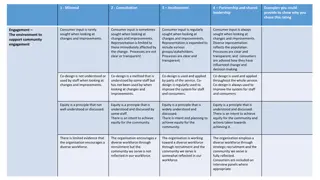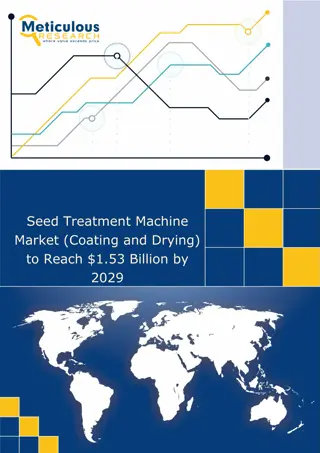Preliminary Analysis for Consumer Clothes Dryers
Consumer clothes dryer energy conservation standards are being evaluated at a public meeting, inviting comments on the analysis. Topics include regulatory history, engineering analysis, and next steps in the rulemaking process.
Download Presentation

Please find below an Image/Link to download the presentation.
The content on the website is provided AS IS for your information and personal use only. It may not be sold, licensed, or shared on other websites without obtaining consent from the author.If you encounter any issues during the download, it is possible that the publisher has removed the file from their server.
You are allowed to download the files provided on this website for personal or commercial use, subject to the condition that they are used lawfully. All files are the property of their respective owners.
The content on the website is provided AS IS for your information and personal use only. It may not be sold, licensed, or shared on other websites without obtaining consent from the author.
E N D
Presentation Transcript
Preliminary Analysis for Consumer Clothes Dryers Bryan Berringer Department of Energy Building Technologies Program EERE-2014-BT-STD-0058 ResClothesDryers2014STD0058 @ee.doe.gov May 26, 2021 1 | Energy Efficiency and Renewable Energy eere.energy.gov
Welcome Introductions Ground Rules Speak one at a time. Say your name for the record there will be a complete transcript of this meeting. Be concise share the air-time . Participants turn phone on mute; raise your hand to be recognized to speak. Agenda Review Opening Remarks 2
Listening Via the Webcast The Department is broadcasting this meeting live over the Internet. The web broadcast allows stakeholders to listen in, view the slides, and provide comments during the meeting. All stakeholders are encouraged to submit written comments after the public meeting. 3
Purpose of the Public Meeting Present the procedural and analytical approaches to evaluate energy conservation standards for consumer clothes dryers. Invite comment on the energy conservation standards preliminary analysis. Discuss next steps in the rulemaking. Invite participants to provide summary comments or statements and raise additional issues for discussion. 4
Issues for Discussion Issue Box: DOE welcomes comments, data, and information concerning its preliminary analysis of potential energy conservation standards for consumer clothes dryers. Issues that correspond to those raised in DOE s published material will be numbered in accordance with that material. Whether invited by an issue box or not, comments are welcome on any part of DOE s analysis. Issue box numbering corresponds to the list of issues published at the end of the Preliminary Analysis document, available at: www.regulations.gov/document/EERE-2014-BT-STD-0058-0020 The deadline for submitting comments is July 6, 2021. 5
Opening Remarks Meeting participants are invited to provide opening remarks or statements at this time. 6
Public Meeting Topics 1 Regulatory History, Test Procedures, and Overview 2 Market and Technology Assessment and Screening 3 Engineering Analysis 4 Markups Analysis 5 Energy Use Analysis and Life-Cycle Cost Analysis 6 Shipments and National Impact Analysis 7 NOPR Analyses 8 Next Steps 7
Regulatory History Energy Policy and Conservation Act of 1975 (EPCA) Authorizes DOE to establish conservation standards for covered products or equipment that would likely result in significant national energy savings. Specifies a list of covered residential products and commercial equipment and contains provisions to classify additional products as covered products: Necessary to fulfill the purposes of EPCA Average annual per-household energy use is likely to exceed 100 kWh/year Direct Final Rule (DFR) (76 FR 22454) Published April 21, 2011 DOE prescribed the current energy conservation standards for consumer clothes dryers Short-Cycle Product Class Final Rule (85 FR 81359) Published December 16, 2020 DOE established separate product classes for consumer clothes dryers that offer cycle times for a normal cycle of less than 30 minutes On April 2, 2021, The Association of Home Appliance Manufacturers (AHAM) submitted a request for reconsideration and withdrawal of this final rule 8
Covered Product Definition At 10 CFR 430.2, electric and gas clothes dryers are defined as follows: Electric clothes dryer means a cabinet-like appliance designed to dry fabrics in a tumble- type drum with forced air circulation. The heat source is electricity and the drum and blower(s) are driven by an electric motor(s). Gas clothes dryer means a cabinet-like appliance designed to dry fabrics in a tumble-type drum with forced air circulation. The heat source is gas and the drum and the blower(s) are driven by an electric motor(s). 9
Consumer Clothes Dryer Standards Rulemaking Timeline Final RFI Preliminary Analysis NOPR/NOPD Rule/Determination RFI published in the Federal Register on March 27, 2015 (80 FR 16309) Sought feedback on whether amended standards for consumer clothes dryers would result in a significant amount of additional energy savings and whether those standards would be technologically feasible and economically justified Preliminary Analysis Notice and Technical Support Document (TSD) published on April 19, 2021 (86 FR 20327) Webinar today, May 26, 2021 Comment period ends July 6, 2021 DOE reviews and considers all comments 10
Public Meeting Topics 1 Regulatory History, Test Procedures, and Overview 2 Market and Technology Assessment and Screening 3 Engineering Analysis 4 Markups Analysis 5 Energy Use Analysis and Life-Cycle Cost Analysis 6 Shipments and National Impact Analysis 7 NOPR Analyses 8 Next Steps 11
Preliminary Analysis Rulemaking Stages Final RFI Preliminary Analysis NOPR/NOPD Rule/Determination Market & Technology Assessment Screening Analysis Engineering Analysis Markups Analysis Life-Cycle Cost and Payback Analysis Energy Use Analysis National Impact Analysis Shipments Analysis 12
Market and Technology Assessment Purposes: Characterize the consumer clothes dryer industry Identify existing regulatory and voluntary efficiency programs Gather historical shipments and other relevant market data Identify technology options for improving efficiency 13
Product Classes DOE s current standards divide consumer clothes dryers into 6 product classes, based on several factors: Fuel Type (electric or gas) Capacity (4.4 cubic feet (ft ) or greater or less than 4.4 ft ) Operating Voltage (120 volts (V) or 240V) Venting Presence (vented or ventless) Combination of Major Functions (combination washer/dryer) Current Product Classes Vented Dryers i. Electric, Standard (4.4 ft or greater capacity) ii. Electric, Compact (120 V) (less than 4.4 ft capacity) iii. Electric, Compact (240 V) (less than 4.4 ft capacity) iv. Gas Ventless Dryers v. Electric, Compact (240 V) (less than 4.4 ft capacity) vi. Electric, Combination Washer/Dryer 14
Product Classes Ventless Electric Standard DOE currently considers ventless electric compact 240V clothes dryers as a product class. Based on a review of the U.S. market, DOE is aware of at least one available ventless electric 240V clothes dryer with a drum capacity greater than 4.4 ft . DOE analyzed a new product class for standard-size ventless electric clothes dryers. Vented Gas DOE is also aware of a vented gas clothes dryer with a drum capacity less than 4.4 ft available on the US market. DOE analyzed two separate vented gas clothes dryer product classes: vented gas standard and vented gas compact. 15
Product Classes DOE analyzed the consumer clothes dryer product classes listed in the table below in this preliminary analysis. Preliminary Analysis Analyzed Product Classes Vented Dryers i. Electric, Standard (4.4 ft or greater capacity) ii. Electric, Compact (120 V) (less than 4.4 ft capacity) iii. Electric, Compact (240 V) (less than 4.4 ft capacity) iv. Gas, Standard (4.4 ft or greater capacity) v. Gas, Compact (less than 4.4 ft capacity) Ventless Dryers vi. Electric, Standard (4.4 ft or greater capacity) vii. Electric, Compact (240 V) (less than 4.4 ft capacity) viii. Electric, Combination Washer/Dryer 16
Issue for Discussion Consumer Clothes Dryer Product Classes DOE requests comment on the analyzed consumer clothes dryer product classes. 17
Product Test Procedures The preliminary analysis is based on DOE s test procedure in 10 CFR part 430, subpart B, appendix D2, including the amendments proposed in test procedure notice of proposed rulemaking (NOPR) published on July 23, 2019 (84 FR 35484). The test method in appendix D2 accounts for automatic cycle termination and more accurately represents consumer usage than the test method in appendix D1. Among other proposed changes, the July 2019 TP NOPR proposed to: Specify the order of adjustments to maintain the required heat input rate for gas dryers Clarify inactive and off mode power measurement instructions Clarify the final moisture content (FMC) requirements for automatic termination dryers 18
Manufacturers and Distribution DOE identified 15 manufacturers producing consumer clothes dryers for the U.S. market Sold under more than 30 different brands. Based on basic model counts, DOE estimates that Whirlpool, LG, Electrolux, Haier GE, Samsung, and Daewoo account for about 95% of basic models. DOE did not identify any small (i.e., <1,500 employees) U.S.- based manufacturers of consumer clothes dryers. Consumer clothes dryers are sold through a variety of channels. Primary Channel: Residential Retail Stores (e.g., department, appliance, electronics, home improvement) Other Channels: Commercial Distributors and Wholesalers 19
Shipments DOE reviewed data collected by Appliance Design, AHAM, and Appliance Magazine to evaluate historical consumer appliance product shipment trends Electric clothes dryers have consistently shipped in greater numbers than gas clothes dryers 20
Technology Assessment Consumer clothes dryers are designed to dry clothes by tumbling the load in a heated drum to remove moisture by means of evaporation. Consumer clothes dryers operate as follows: Vented Configuration 1. An electrical motor rotates the drum within the housing, which is contained inside a cabinet. Air is drawn through the drum by means of an electrically driven blower. The air stream is heated prior to entering the drum, to evaporate the moisture in the clothing with which the air comes in contact. Heating may be provided by an electrically energized resistive element, heat pump technology, or gas burner system. There are two air venting configurations: 2. 3. Ventless Configuration 4. Vented: Moisture-laden exhaust air is vented to an exterior location due to its high temperature and relative humidity. Ventless: Exhaust air is routed through a heat exchanger (air- to-air or air-to-refrigerant). The water vapor condenses on the heat exchanger surface where it is either collected for disposal by the user or discharged into a drain line. Images Source: https://www.appliancesconnection.com/blog/vented-vs-ventless-dryers 21
Technology Assessment DOE identified the following initial technology options, organized into five categories, that could be used to improve energy efficiency in consumer clothes dryers: Dryer Control or Drum Upgrades Improved termination Increased insulation Modified operating conditions Improved air circulation Improved drum design Methods of Exhaust Heat Recovery (Vented Only) Recycle exhaust heat Inlet air preheat Inlet air preheat, condensing mode Heat Generation Options Heat pump (electric only) Thermoelectric heating (electric only) Microwave (electric only) Modulating heat Indirect heating Component Improvements Improved motor efficiency Improved fan efficiency Standby Power Improvements Transformerless power supply with auto- powerdown Due to patents held, DOE did not include long-wavelength radio frequency (RF) drying and ultrasonic drying technologies as part of this preliminary analysis. 22
Issue for Discussion Technology Assessment DOE requests comment on the feasibility and effectiveness of the technologies identified in the Technology Assessment 23
Product Class Market Distribution Vented Electric Standard and Vented Gas models represent majority of basic consumer clothes dryer models in the CCMS database Source: CCMS Database, accessed August 7, 2019 (https://www.regulations.doe.gov/certification-data) 24
Preliminary Analysis Rulemaking Stages Final RFI Preliminary Analysis NOPR/NOPD Rule/Determination Market & Technology Assessment Screening Analysis Engineering Analysis Markups Analysis Life-Cycle Cost and Payback Analysis Energy Use Analysis National Impact Analysis Shipments Analysis 25
Screening Analysis Purpose: Identify any technologies to be eliminated from further consideration DOE screens out technology options based on four factors: 1. Technological feasibility 2. Practicability to manufacture, install, and service 3. Impacts on product utility to consumers 4. Safety of technologies DOE screened out Thermoelectric heating (electric only) Initial prototype design produced longer-than-desired drying times due to direct-contact heat transfer limitations via the drum surface. Screened out due to technological feasibility (research and development is still ongoing) DOE screened out Microwave heating (electric only) Significant technical and safety issues are introduced by the potential arcing from metallic objects in the fabric load (zippers, buttons, coins) Screened out due to safety hazard and potential impacts on consumer utility. DOE screened out Indirect heating Only viable in residences with hydronic heating system and would require significant plumbing work to circulate heated water through a heat exchanger in the clothes dryer. Screened out due to impracticability to install on a scale necessary to serve the relevant market at the time of the effective date of any new standard. 26
Issue for Discussion Screening Analysis DOE requests comment on the technologies screened out in the Screening Analysis 27
Screening Analysis The following technology options were considered in the engineering analysis. Dryer Control or Drum Upgrades Improved termination Modified operating conditions Improved air circulation Increased Insulation Improved drum design Methods of Exhaust Heat Recovery (vented models only) Recycle exhaust heat Inlet air preheat Inlet air preheat, condensing mode Heat Generation Options Heat pump, electric only Modulating heat Component Improvements Improved motor efficiency Improved fan efficiency Standby Power Improvements Transformerless power supply with auto-powerdown 28
Public Meeting Topics 1 Regulatory History, Test Procedures, and Overview 2 Market and Technology Assessment and Screening 3 Engineering Analysis 4 Markups Analysis 5 Energy Use Analysis and Life-Cycle Cost Analysis 6 Shipments and National Impact Analysis 7 NOPR Analyses 8 Next Steps 29
Preliminary Analysis Rulemaking Stages Final RFI Preliminary Analysis NOPR/NOPD Rule/Determination Market & Technology Assessment Screening Analysis Engineering Analysis Markups Analysis Life-Cycle Cost and Payback Analysis Energy Use Analysis National Impact Analysis Shipments Analysis 30
Engineering Analysis Purposes: Evaluate design options that improve efficiency Characterize manufacturer production cost (MPC) versus efficiency for higher-efficiency consumer clothes dryers Manufacturer Production Cost Efficiency Relationship Downstream Analysis Production Cost Life-Cycle Cost and Payback Period Analysis Manufacturer National Impact Analysis Manufacturer Impact Analysis Efficiency Level 31
Engineering Analysis Process The engineering analysis for consumer clothes dryers was conducted as follows: 1. Review of Previous TSDs and Market Assess applicability of previous TSDs to current process 2. Selection of New Models 3. Product Testing Select new models based on gaps in sample Conduct testing using the appendix D2 test procedure 5. Efficiency Levels 4. Product Teardown 6. Cost-Efficiency Curves Determine appropriate baseline and improved efficiency levels based on the market. Perform teardowns to determine product designs and manufacturing costs. Determine cost-efficiency relationships. 32
Model Selection DOE selected 18 total units The sample covered 7 of the 8 product classes proposed for this preliminary analysis, including all 6 product classes with existing standards. The ventless electric standard product class was not represented in the model selection because there is only one unit available on the market. Efficiency levels were instead based on other product classes. 9 of the 18 units were baseline units, having the minimum efficiency required to meet current DOE energy conservation standards The max-tech model in each analyzed product class was included, where possible Multiple major manufacturers were represented in each product class analyzed, where possible All units in the test sample were equipped with automatic termination controls 33
Product Testing DOE analyzed potential energy conservation standards for consumer clothes dryers based on the appendix D2 test method Appendix D2 more accurately measures the effects of automatic cycle termination, requires a lower final RMC, and does not rely on a field use factor to account for over drying. In cases where wrinkle prevention programs were on by default or specified by manufacturers to remain activated, energy consumption associated with this program was considered in determination of efficiency levels, though the impact was not significant DOE also measured energy use associated with standby or off mode for all units, but did not observe any correlation between standby power and overall unit efficiency 34
Product Testing The following tables contain the average measured CEF for each test unit as well as average drying cycle length and final RMC of the test load Average Measured D2 CEF (lb/kWh) 2.20 2.54 2.68 3.04 3.27 3.94 4.06 4.19 Average Cycle Length (min) 98.0* 105.0* 51.7 50.2 41.1 71.4 80.2 62.1 Average Final RMC (%) 1.63 1.41 0.72 0.50 0.72 0.94 1.53 1.53 Rated Capacity (ft3) Unit # Product Class Description 1 2 3 4 5 6 7 8 Vented Electric, Standard Vented Electric, Standard Vented Electric, Standard Vented Electric, Standard Vented Electric, Standard Vented Electric, Standard Vented Electric, Standard Vented Electric, Standard 6 7 7 7 7.5 7.4 7.4 7.3 *Cycle time includes wrinkle prevention mode. 35
Product Testing (Continued) Average Measured D2 CEF (lb/kWh) 2.42 2.00 3.53 1.66 3.58 2.63 2.03 6.87 Average Cycle Length (min) 62.8 57.7 27.1 65.1 72.8 88.5* 60.5 48.8 Average Final RMC (%) 0.52 1.46 0.62 1.66 1.53 1.89 1.34 1.36 Rated Capacity (ft3) Unit # Product Class Description 9 10 11 12 13 14 15 16 Vented Electric, Compact (120V) Vented Electric, Compact (240V) Vented Electric, Compact (240V) Vented Gas Compact Vented Gas Vented Gas Ventless Electric, Compact (240V) Ventless Electric, Compact (240V) Ventless Electric, Combination Washer/Dryer Ventless Electric, Combination Washer/Dryer 3.4 3.4 4 3.4 7.4 7 4.2 4.1 17 2.27 2.27 318.8* 1.83 18 2.04 2.55 83.9 1.90 *Cycle time includes wrinkle prevention mode. 36
Product Teardowns DOE calculated MPCs by disassembling consumer clothes dryers from multiple manufacturers and creating bills of materials (BOMs). BOMs record the product components in detail and include estimates of materials, labor, capital equipment, and overhead costs. DOE conducted teardowns on all 18 test units selected for this preliminary analysis. Because no baseline ventless electric standard clothes dryer was available, DOE used a combination of catalog teardowns and scaled the baseline MPC for the ventless electric compact (240V) product class by drum capacity and overall cabinet size. Chapter 5 of the preliminary TSD provides additional details on DOE s teardown and cost model methodology. 37
Efficiency Levels DOE set the baseline efficiency level equal to the minimum CEF in the DOE test sample. For the units certified using appendix D1, the CEF values measured under appendix D2 during investigative testing were used for this preliminary analysis. For the units already certified using appendix D2, the rated CEF values were used. For the ventless electric standard product class, DOE scaled the measured baseline CEF for the ventless electric compact product class by the ratio of baseline efficiencies between the vented electric standard and vented electric compact (240V) product classes 38
Efficiency Levels Based on teardowns and testing, incremental efficiency levels were then set according to technology options that DOE determined could be used to increase efficiency and that are available in units currently in the U.S.: Dryer Control Electronic Controls Optimized Heating System (e.g., lower heater wattage, optimized blower motor and airflow design) Advanced Automatic Termination Control System (i.e., more accurate conductivity/moisture sensors, better cycle termination algorithm, more advanced microprocessor controller) High Speed Spin (i.e., initial spin cycle to remove additional moisture prior to any heat input) Heat Generation Options Heat Pump Modulating Two-Stage Heat Systems Exhaust Heat Recovery Inlet Air Preheat (i.e., air-to-air heat exchanger recovers exhaust heat and preheats inlet air) 39
Efficiency Levels Vented Electric Vented Electric Standard Vented Electric Compact (120V) CEF (lb/kWh) 2.42 2.95 3.35 4.28 4.33 4.63 4.73 Vented Electric Compact (240V) CEF (lb/kWh) 2.00 2.44 2.76 3.53 3.57 3.82 3.91 Efficiency Level Description CEF (lb/kWh) 2.20 2.68 3.04 3.27 3.93* 4.21 4.30 Baseline (Electromechanical Controls) EL1 (Baseline + Electronic Controls) EL2 (EL1 + Optimized Heating Systems) EL3 (EL2 + More Advanced Automatic Termination Control System) EL4 (EL3 + Modulating (2-Stage) Heat) EL5 (EL4 + Inlet Air Pre-Heat) EL6 (Heat Pump Dryer) *Based on the Energy Star performance specification level 40
Efficiency Levels Vented Gas Vented Gas Standard CEF (lb/kWh) 2.63 3.21 Vented Gas Compact CEF (lb/kWh) 1.66 2.02 Efficiency Level Description Baseline (Electromechanical Controls) EL1 (Baseline + Electronic Controls) EL2 (EL1 + Optimized Heating Systems and More Advanced Automatic Termination Control System) EL3 (EL2 + Modulating (2-Stage) Heat) EL4 (EL3 + Inlet Air Pre-Heat) 3.48* 2.19 4.70 5.04 2.96 3.17 *Based on the Energy Star performance specification level 41
Efficiency Levels Ventless Electric Ventless Electric Standard Ventless Electric Compact (240V) CEF (lb/kWh) 2.03 2.68* 5.70 Efficiency Level Description CEF (lb/kWh) 2.23 2.95 4.50 Baseline (Electronic Controls) EL1 (Baseline + More Advanced Automatic Termination Control System) EL2 (Heat Pump Dryer (Max-Tech)) *Based on the Energy Star performance specification level Ventless Electric Combination Washer/Dryer CEF (lb/kWh) 2.27 2.55 5.42 Efficiency Level Description Baseline (Electronic Controls) EL1 (Baseline + High Speed Spin) EL2 (Heat Pump Dryer (Max-Tech)) 42
Manufacturer Production Cost DOE developed incremental MPCs based on product teardowns and manufacturing cost modeling of the design changes at each efficiency level. DOE calculated the cost to manufacture a representative baseline unit for each product class and estimated costs up to max-tech based on teardowns, when the unit was available. When units were not available for a given product class and efficiency level, DOE implemented design changes that could be made to existing models to create a model at the desired efficiency level. DOE estimated the incremental MPC for heat pump technology in the ventless electric combination washer/dryer product class, using the heat pump design considered for the ventless electric compact (240V) product class (combination washer/dryer models with heat pump technology were not available at the time that DOE conducted its testing and teardowns for this preliminary analysis). 43
Incremental MPC Vented Electric Vented Electric Standard Vented Electric Compact (120V) (2018$) Vented Electric Compact (240V) (2018$) Efficiency Level Description (2018$) Baseline (Electromechanical Controls) EL1 (Baseline + Electronic Controls) EL2 (EL1 + Optimized Heating Systems) EL3 (EL2 + More Advanced Automatic Termination Control System) EL4 (EL3 + Modulating (2-Stage) Heat) EL5 ( EL4 + Inlet Air Pre-Heat) EL6 (Heat Pump Dryer) - - - $11.99 $14.98 $19.10 $24.49 $64.36 $269.10 $16.39 $20.71 $26.23 $31.90 $78.40 $327.80 $16.92 $21.25 $26.76 $32.44 $78.93 $322.94 44
Incremental MPC Vented Gas Vented Gas Standard (2018$) Vented Gas Compact (2018$) Efficiency Level Description Baseline (Electromechanical Controls) EL1 (Baseline + Electronic Controls) EL2 (EL1 + Optimized Heating Systems and More Advanced Automatic Termination Control System) EL3 (EL2 + Modulating (2-Stage) Heat) EL4 (EL3 + Inlet Air Pre-Heat) - - $15.11 $13.65 $20.85 $20.96 $35.55 $75.44 $37.28 $83.78 45
Incremental MPC Ventless Electric Ventless Electric Standard Ventless Electric Compact (240V) (2018$) Efficiency Level Description (2018$) Baseline (Electronic Controls) EL1 (Baseline + More Advanced Automatic Termination Control System) EL2 (Heat Pump Dryer (Max-Tech)) - - $3.58 $223.71 $3.58 $201.05 Ventless Electric Combination Washer/Dryer Efficiency Level Description (2018$) Baseline (Electronic Controls) EL1 (Baseline + High Speed Spin) EL2 (Heat Pump Dryer (Max-Tech)) - $0.00 $228.92 46
Issue for Discussion Engineering Analysis DOE requests comment on the engineering analysis process and results. 47
Public Meeting Topics 1 Regulatory History, Test Procedures, and Overview 2 Market and Technology Assessment and Screening 3 Engineering Analysis 4 Markups Analysis 5 Energy Use Analysis and Life-Cycle Cost Analysis 6 Shipments and National Impact Analysis 7 NOPR Analyses 8 Next Steps 48
Preliminary Analysis Rulemaking Stages Final RFI Preliminary Analysis NOPR/NOPD Rule/Determination Market & Technology Assessment Screening Analysis Engineering Analysis Markups Analysis Life-Cycle Cost and Payback Analysis Energy Use Analysis National Impact Analysis Shipments Analysis 49
Markups Analysis Purpose Determine consumer prices based on manufacturer s selling price for baseline and higher efficiency equipment. Characterize product distribution channels. Manufacturers Retailers Consumers Method Retail markup: Analyze company direct costs, expenses, and profits. U.S. Census Annual Retail Trade Survey Sales Taxes: The Sales Tax Clearinghouse 50
